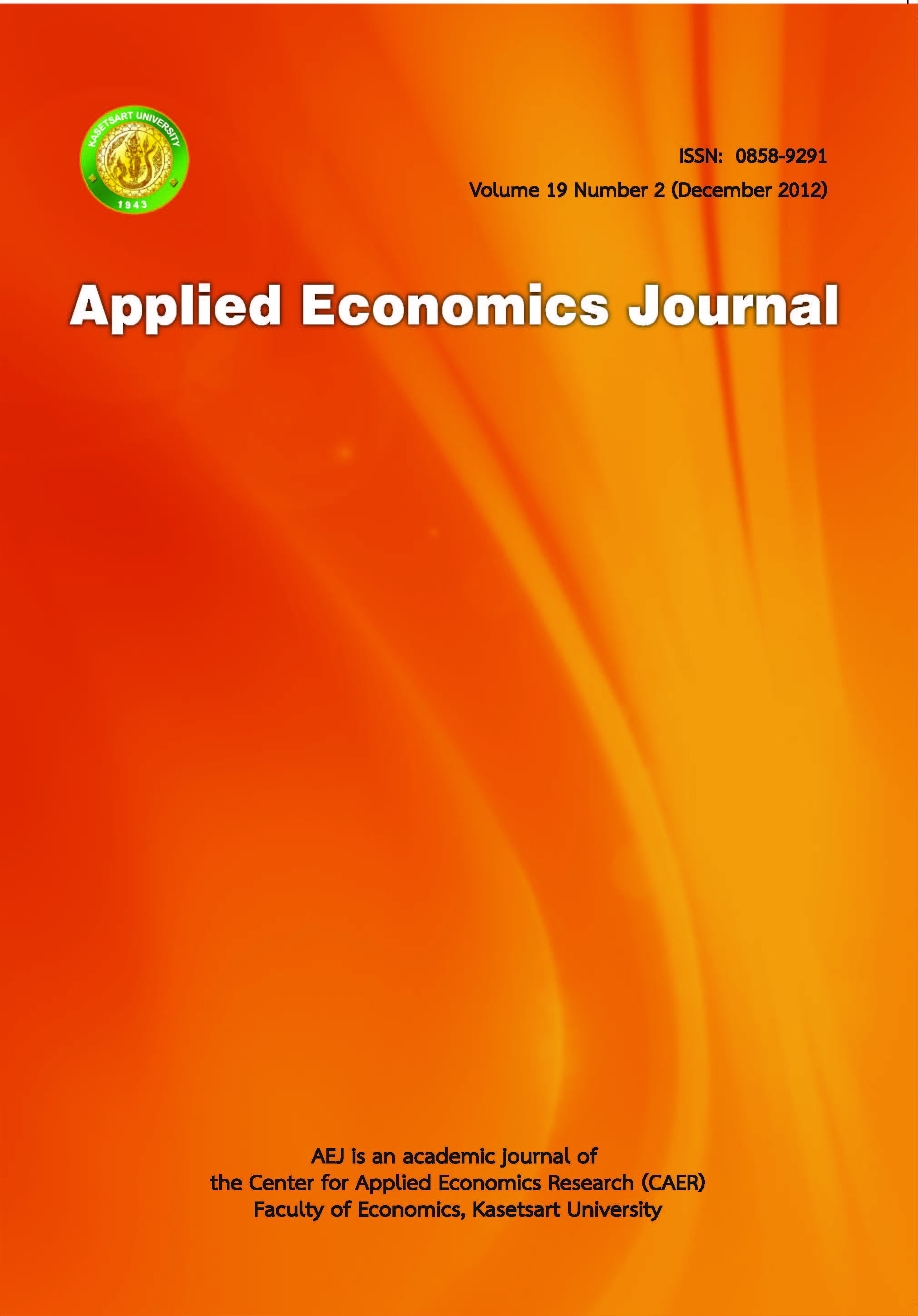Model-based Measures of Output Gap: Application to the Thai Economy
Main Article Content
Abstract
In this paper we compare two model-based measures of the output gap. The first measure, as proposed by Gali (2011), defines output gap as the difference between actual output and the output level that would be if the economy operates under a perfectly competitive market without price or wage stickiness. We used annual data of relevant variables for Thailand and computed the output gap under this approach. The calculated output gap for Thailand shows that the Thai economy performs consistently above the potential level, which is hard to rationalize especially during the period of recession. We then proposed adifferent model-based measure of the output gap, which is based on the method of “business cycle accounting” (Chari et al., 2007). The approach built on the prototype real business cycle models, which incorporate time-varying wedges that resemble productivity, labor and investment taxes, and government consumption shocks. As a result, the sourcesof business cycle fluctuation can be classified into efficiency, labor, investment, and government consumption wedges. We carried out a decomposition of real fluctuation in Thailand and then removed those wedges from the real output series to obtain the “potential output”, i.e. an output level when all the inefficiencies are removed. The analysis provides the estimated result of potential output and output gap for the Thai economy. Under this approach we found a negative output gap, which is opposite to the finding under Gali’s approach.
Keywords : output gap, potential output, business cycle accounting, DSGE
JEL Classification : E01, E27, E32, E47
Article Details
The paper is published under CC BY-NC-ND, in which the article is freely downloaded and shared in its original form non-commercially and its citation details are identified.


